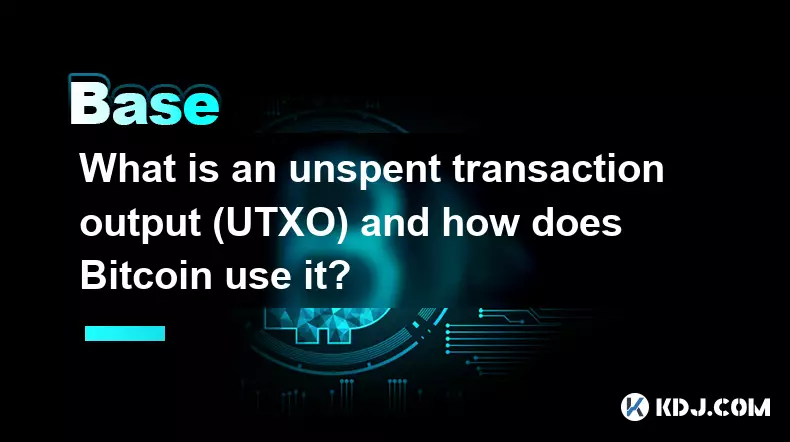-
 bitcoin
bitcoin $95203.028270 USD
-4.12% -
 ethereum
ethereum $3151.730711 USD
-1.61% -
 tether
tether $0.999170 USD
-0.04% -
 xrp
xrp $2.273039 USD
-1.55% -
 bnb
bnb $924.288432 USD
0.14% -
 solana
solana $141.112899 USD
-2.02% -
 usd-coin
usd-coin $0.999964 USD
0.02% -
 tron
tron $0.293976 USD
0.82% -
 dogecoin
dogecoin $0.160772 USD
-1.84% -
 cardano
cardano $0.506357 USD
-3.90% -
 hyperliquid
hyperliquid $37.900515 USD
0.03% -
 zcash
zcash $644.358451 USD
26.66% -
 chainlink
chainlink $14.062007 USD
-2.60% -
 bitcoin-cash
bitcoin-cash $484.381072 USD
-5.12% -
 unus-sed-leo
unus-sed-leo $9.199874 USD
0.27%
What is a Layer 0 protocol and how does it enable blockchain interoperability?
Layer 0 protocols form the foundational network enabling blockchains to communicate, interoperate, and scale through decentralized connectivity and cross-chain messaging.
Nov 14, 2025 at 09:39 am

Understanding the Foundation: What Is a Layer 0 Protocol?
1. A Layer 0 protocol serves as the foundational infrastructure upon which blockchains are built, operating beneath Layer 1 networks like Bitcoin or Ethereum.
2. Unlike higher-layer protocols that focus on transaction processing or smart contracts, Layer 0 deals with network communication, data transmission, and cross-chain connectivity.
3. It provides the underlying framework for multiple independent blockchains to exist and interact within a single ecosystem.
4. By managing how different chains communicate, authenticate, and share data, Layer 0 enables a more modular and scalable blockchain architecture.
5. Examples include Cosmos with its Inter-Blockchain Communication (IBC) protocol and Polkadot’s Relay Chain, both designed to support heterogeneous chain ecosystems.
How Layer 0 Enables Blockchain Interoperability
1. Layer 0 establishes standardized messaging protocols that allow distinct blockchains to exchange information securely and efficiently.
2. Through shared networking layers and consensus relays, it ensures that messages sent from one chain can be verified and executed on another.
3. It supports cross-chain asset transfers without relying on centralized intermediaries, enabling trustless interoperability.
4. By decoupling execution from validation and communication, Layer 0 allows developers to build specialized blockchains that still remain connected.
5. Its routing mechanisms handle packet delivery across diverse networks, similar to how the internet routes data between computers using TCP/IP.
Key Components of a Layer 0 Ecosystem
1. A decentralized relay network ensures that state proofs and transaction data can be passed between chains reliably.
2. Identity and cryptographic verification systems maintain security when validating cross-chain transactions.
3. Resource management tools allocate bandwidth and computational load across interconnected chains to prevent congestion.
4. Upgradable governance models allow stakeholders to coordinate upgrades and parameter changes across the entire network.
5. Modular design principles let new blockchains plug into the Layer 0 framework without requiring hard forks or major reconfigurations.
Impact on Decentralized Applications and Developers
1. Developers gain the ability to deploy application-specific blockchains optimized for performance, privacy, or use case requirements.
2. dApps can leverage assets and data from multiple chains seamlessly, expanding functionality beyond the limits of a single network.
3. Reduced dependency on monolithic platforms decreases congestion and lowers transaction costs for end users.
4. Composability extends across chains, allowing DeFi protocols, NFT marketplaces, and identity solutions to interoperate natively.
5. Innovation accelerates as teams experiment with novel consensus mechanisms and data structures within a secure, interconnected environment.
Frequently Asked Questions
What distinguishes Layer 0 from Layer 1 blockchains?Layer 0 provides the communication backbone and network layer for multiple Layer 1 blockchains. While Layer 1 chains process transactions and execute smart contracts, Layer 0 handles how these chains discover each other, transfer data, and validate cross-chain messages.
Can Layer 0 protocols work with existing blockchains like Ethereum?Yes, though integration often requires bridges or adapter modules. Some Layer 0 systems are designed to connect natively with external networks by verifying their consensus states through light clients or oracle relays.
Is Layer 0 inherently more secure than other interoperability solutions?Security depends on implementation. Trust-minimized designs that use cryptographic proofs and decentralized validators reduce reliance on third parties, making them more resilient than custodial bridge models commonly used today.
Do all Layer 0 networks support smart contracts?No, Layer 0 itself typically does not execute smart contracts. Instead, it facilitates interaction between Layer 1 chains where smart contract execution occurs. The focus remains on connectivity, not computation.
Disclaimer:info@kdj.com
The information provided is not trading advice. kdj.com does not assume any responsibility for any investments made based on the information provided in this article. Cryptocurrencies are highly volatile and it is highly recommended that you invest with caution after thorough research!
If you believe that the content used on this website infringes your copyright, please contact us immediately (info@kdj.com) and we will delete it promptly.
- Chang Tso-Lin, Warlord, Portrait: A Rare Coin's Journey to Auction
- 2025-11-16 02:55:01
- ZAR Supercoin Lands on Luno: A Stablecoin Game Changer for South Africa?
- 2025-11-16 02:50:01
- Hedera, Bitcoin, BTCFi: WBTC Integration Sparks DeFi Evolution
- 2025-11-16 00:05:01
- Shanklin Veterans Get a Pre-Christmas Treat: A Heartwarming Gathering
- 2025-11-15 23:25:01
- Zero Knowledge Proof (ZKP): Revolutionizing Crypto Presales with Fairness and Transparency
- 2025-11-15 23:25:01
- SEC, Crypto Assets, and Classification: A New York Minute on Regulation
- 2025-11-15 23:20:01
Related knowledge

What is the difference between a transparent and a shielded transaction?
Nov 10,2025 at 05:59pm
Understanding Transparent Transactions in Cryptocurrency1. Transparent transactions are the standard form of transaction on most public blockchains li...

What is a "crypto airdrop farmer" and what strategies do they use?
Nov 09,2025 at 03:39pm
What Is a Crypto Airdrop Farmer?1. A crypto airdrop farmer is an individual who actively participates in blockchain projects to qualify for free token...

What is an unspent transaction output (UTXO) and how does Bitcoin use it?
Nov 12,2025 at 01:40am
Understanding the Concept of Unspent Transaction Output (UTXO)1. An Unspent Transaction Output, commonly referred to as UTXO, is a fundamental compone...

What is a "governance attack" and how can a DAO be compromised?
Nov 14,2025 at 05:59am
Understanding Governance Attacks in Decentralized Autonomous Organizations1. A governance attack occurs when an individual or group gains disproportio...

How do you track a crypto portfolio across multiple wallets and chains?
Nov 12,2025 at 04:19pm
The Evolution of Decentralized Exchanges in the Crypto Ecosystem1. Decentralized exchanges (DEXs) have transformed how users trade digital assets by r...

What is a "rug pull" clause in a smart contract and how can you spot it?
Nov 14,2025 at 11:40pm
Understanding the Concept of a Rug Pull in Decentralized Finance1. A rug pull refers to a malicious act in the cryptocurrency space where developers a...

What is the difference between a transparent and a shielded transaction?
Nov 10,2025 at 05:59pm
Understanding Transparent Transactions in Cryptocurrency1. Transparent transactions are the standard form of transaction on most public blockchains li...

What is a "crypto airdrop farmer" and what strategies do they use?
Nov 09,2025 at 03:39pm
What Is a Crypto Airdrop Farmer?1. A crypto airdrop farmer is an individual who actively participates in blockchain projects to qualify for free token...

What is an unspent transaction output (UTXO) and how does Bitcoin use it?
Nov 12,2025 at 01:40am
Understanding the Concept of Unspent Transaction Output (UTXO)1. An Unspent Transaction Output, commonly referred to as UTXO, is a fundamental compone...

What is a "governance attack" and how can a DAO be compromised?
Nov 14,2025 at 05:59am
Understanding Governance Attacks in Decentralized Autonomous Organizations1. A governance attack occurs when an individual or group gains disproportio...

How do you track a crypto portfolio across multiple wallets and chains?
Nov 12,2025 at 04:19pm
The Evolution of Decentralized Exchanges in the Crypto Ecosystem1. Decentralized exchanges (DEXs) have transformed how users trade digital assets by r...

What is a "rug pull" clause in a smart contract and how can you spot it?
Nov 14,2025 at 11:40pm
Understanding the Concept of a Rug Pull in Decentralized Finance1. A rug pull refers to a malicious act in the cryptocurrency space where developers a...
See all articles










































































